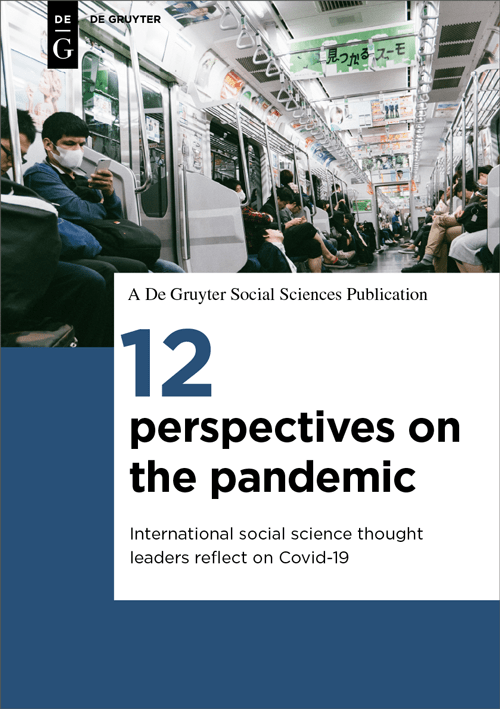The effects of Covid-19 on the tourism industry will linger long after lockdowns are eased
After the immediate restrictions of Covid-19 on travel have been eased, the effects on tourism won’t easily be lifted.
This essay was first published in the free digital pamphlet 12 Perspectives on
the Pandemic: International Social Science Thought Leaders Reflect on Covid-19.
The impact of Covid-19 on the tourism industry cannot be understated. The UN World Tourism Organization estimates a loss of US$300 – 450 billion in international tourism receipts, which equals nearly one third of the US$1.5 trillion generated globally.
Despite swift actions by many governments around the world to protect travel service providers, refocus destination marketing campaigns, and even implement more sustainable management strategies, a larger unknown looms in the back-ground — will tourists actually return? More precisely, when will they return, and will it be soon enough to save destination economies?
Notwithstanding the economic impact of lockdowns, and potentially high levels of unemployment and inflation long after they are eased (which will also infringe upon a person’s ability to spend money on a holiday), Covid-19 demonstrates all too well the unpredictability of exogenous factors and their implications on tourist motivation and tourism demand.
PUSH AND PULL FACTORS
Exogenous factors are events that occur outside the control of the destination and affect tourism demand. These can be weather or geological events, such as the 2004 tsunami in Indonesia or the 2010 earthquake in Haiti. These brought destruction of tourism infrastructure, thereby reducing the supply-side ability to accommodate tourists, despite any interest there might have been in visiting.
Exogenous factors can also take the form of political upheaval and terrorism, such as the Arab Spring that began in 2011 or student protests in Hong Kong (in 2014, then again in 2019). While these events do not necessarily affect tourism infrastructure, they do negatively impact destination image, which results in reduced demand to visit these particular places. Most broadly, global economic downturns, such as the 2008 recession, can both suppress and defer demand around the world — many people were not financially able to take holidays, while those who did travel often chose less costly destinations.
As a result, exogenous factors affect demand via both constraints on travel and influences on motivation. At its simplest, motivation to travel is governed by both push and pull factors. Push factors are the reasons for wanting to get away from everyday life, such as stress or boredom, while pull factors are the destination attributes that attract interest and help potential tourists choose between specific locations. For example, museums might be an important pull factor for the history enthusiast, whereas the nature tourist might look for national parks. Thus, while motivation affects tourism demand, demand is the actual number of tourist arrivals to the destination.
“Ironically, when we perhaps most need a break, to get away from the stress of life, we are all stuck at home, dreaming of the holidays we hope to take once this is over.”
However, Covid-19 is unlike anything that has come before. It began with advice not to visit particular destinations in China in December 2019. Then there were warnings about attending large gatherings for Lunar New Year celebrations throughout Asia. This was followed by the first travel bans in the region, and subsequently full lockdowns and border closings in China. The rest of the world quickly followed suit.
The industry ground to a halt as all non-essential travel was suspended. Ironically, when we perhaps most need a break, to get away from the stress of life, we are all stuck at home, dreaming of the holidays we hope to take once this is over. However, it seems increasingly apparent this will be a very slow process.
LOOKING TO THE FUTURE
“It is very likely that the effects of Covid-19 on the tourism industry will linger long after lockdowns are eased.”
As a result, it is very likely that the effects of Covid-19 on the tourism industry will linger long after lockdowns are eased. While the 2010 tsunami or the 2014 student protests were clearly defined events, uncertainty lingered in potential tourists’ minds for years.
Covid-19 is far more complicated and diffuse. It is a global pandemic. Our fears about specific locations cannot be so easily be assuaged by a new destination marketing campaign. The health safety slogans, ‘anyone can catch it, anyone can spread it’, confirm that the entire journey is a risk — from the train to the airport, on the plane, at the resort, in the local restaurants and cafes — whether one travels to Spain or Bali.
The question of whether travel is safe will continue to act as an overarching constraint on the motivations of so many of us. While desperately wanting to get away for a holiday and being pulled toward the possibilities of so many destinations (likely to be begging tourists to return as soon as non-essential travel is permitted), the question will be, how many of us will see our motivations dampened by warnings of a second, third and even fourth wave of the virus looming in our collective future?
This balancing act between push and pull factors of motivation and the uncertainty of the crisis will be worth watching. The tourism industry, destination economies and individual livelihoods will depend on how this balance unfolds.
Learn more in this related title from De Gruyter
[Title Image via Getty Images.
